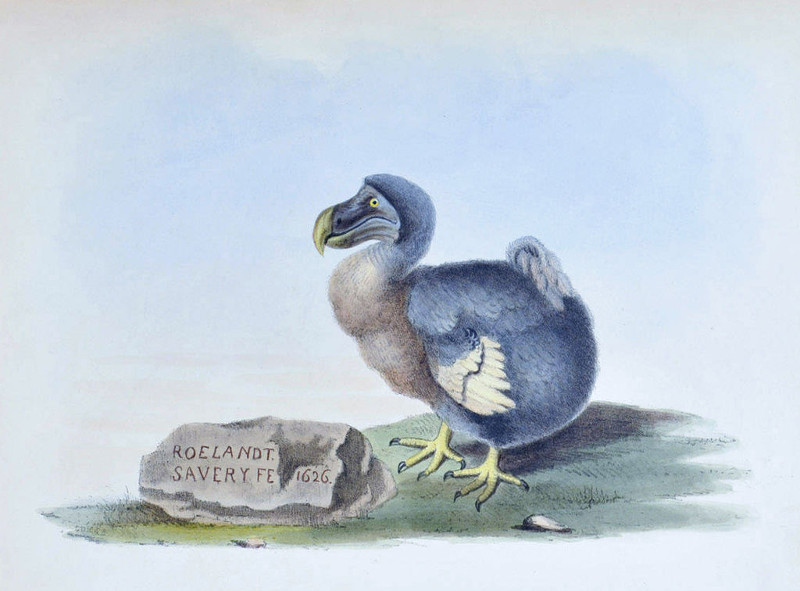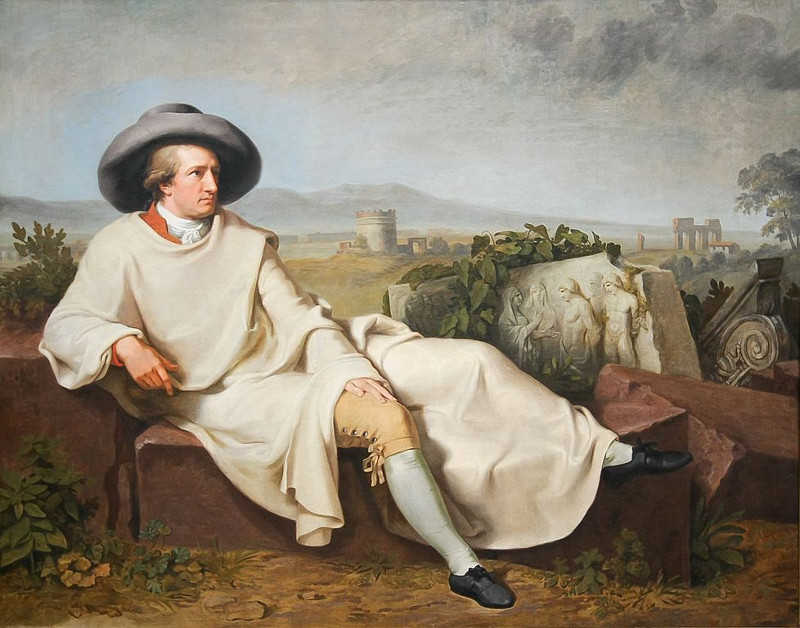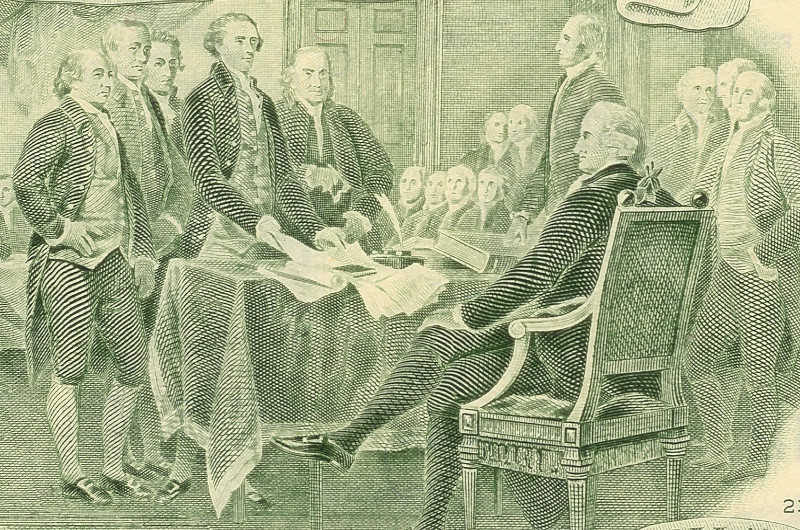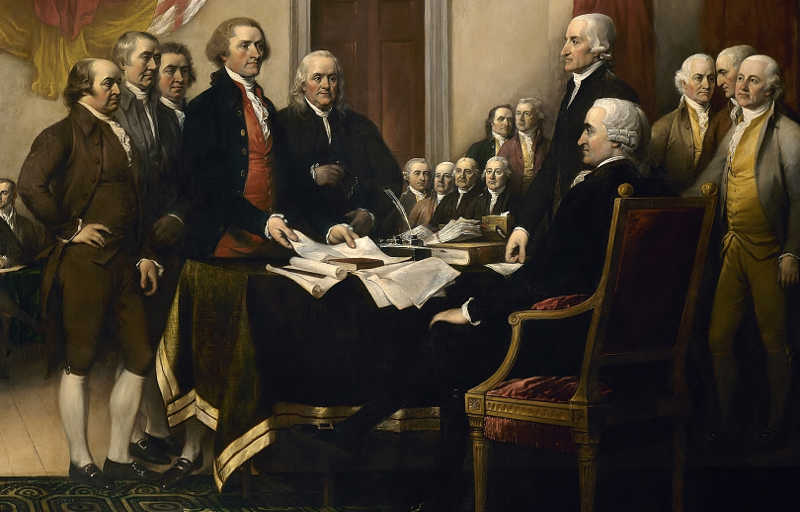
In 1626, Dutch artist Roelandt Savery composed this historic portrait of a dodo, one of the few painted from a live specimen. Unfortunately, he gave it two left feet.

Likewise, in Johann Tischbein’s 1787 portrait of Goethe in the Roman Campagna, the poet’s right leg bears a left foot.

And what has happened to Thomas Jefferson’s left foot on the back of the $2 bill? “Unless Jefferson can bend his leg in the wrong direction at the knee, it is hard to see how this foot can be attached to his leg,” writes William Poundstone in Bigger Secrets. “If it’s someone else’s foot, he is standing in a more incredible position yet.”
The $2 bill engraving is based on John Trumbull’s painting The Declaration of Independence, below. But “The perspective is easier to judge in that painting, and the foot in question (definitely Jefferson’s) does not look so strange as on the bill.”

